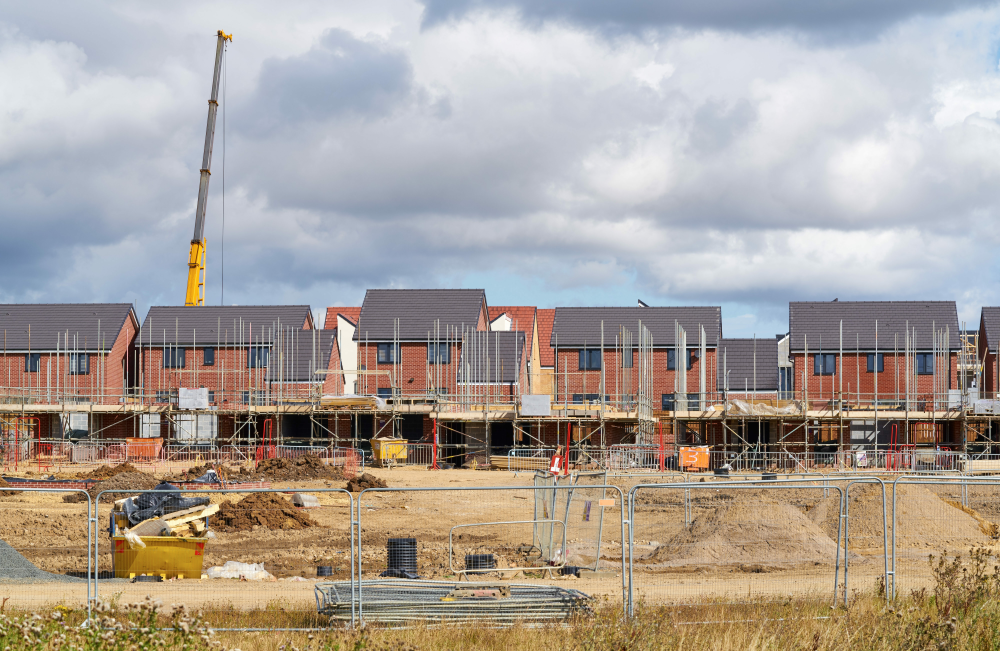Planning reforms for connecting infrastructure and housing
Contents |
[edit] Introduction
On 12 March 2020, the Housing Secretary outlined his department’s plans for planning reform.
One of the headline reforms is better utilisation of brownfield land to integrate existing infrastructure with housing. This forms part of a package of measures, including £400 million of investment to work with local and combined authorities to regenerate brownfield sites, the creation of a ‘brownfield map’, and a call for proposals on building homes above transport hubs.
The latter will likely see an expansion of permitted development (PD) rights, which do not require developer contributions from mechanisms such as section 106 or the Community Infrastructure Levy. While better utilising existing infrastructure to deliver new homes is to be lauded, it’s also important for the infrastructure requirements of those developments to be properly assessed and costed for.
[edit] Long-term strategic planning
The proposals also contained details on a new spatial framework for the Oxford-Cambridge Arc, giving certainty to businesses and developers in the region about where new housing and employment will be delivered until 2050. This move helps support planning for the right infrastructure to meet social, environmental and economic needs.
The idea of a spatial framework aligns with ICE’s call in our 2019 State of the Nation report for long-term, evidence-led regional infrastructure strategies to be developed, and we would be keen to see this approach rolled out to other areas of the country.
In light of the recent floods across the country, the government also committed to review policies for building in areas at risk of flooding, assessing whether current protections in the National Planning Policy Framework are enough and if further reform is needed.
While these initial plans are light on detail, further aspects will be outlined in the government’s Planning White Paper, due out in the spring, as well as a newly announced housing strategy that will be published alongside the Spending Review.
[edit] Regulatory change
A day after the Housing Secretary’s announcement, the National Infrastructure Commission (NIC) released a report on how infrastructure can drive the efficient delivery of new housing. Specifically, the report focuses on utilities and looks at how legal, regulatory and governance frameworks can better enable the effective delivery of infrastructure needed for new communities.
The NIC identify that the risk appetite of infrastructure providers, motivated by regulatory frameworks, creates a barrier to integrated infrastructure and housing provision. This is something ICE also looked at in last year’s State of the Nation report, calling for regulators to build greater flexibility into the utilities’ regulated asset base model so that infrastructure for housing developments can be provided outside of price control periods. An ICE report exploring this in further detail is due out soon.
On the topic of utilities, earlier this week the Culture Secretary announced that the government will legislate to ensure new build homes are built with gigabit-speed broadband. While no firm date for this policy was announced, it will mean developers are legally required to install gigabit-speed broadband from the outset and ensure broadband companies are engaged as early in the process as possible. Placing infrastructure front and centre to new developments in ways such as this is vital.
If you would like to find out more information about ICE’s upcoming work on regulatory flexibility, please email: ice.org.uk policy@ice.org.uk
This article was originally published as ‘Planning reforms for connecting infrastructure and housing: how do they stack up?’ on ICE’s Infrastructure Blog on 20 March, 2020. It was written by David Hawkes, ICE Policy Manager.
--The Institution of Civil Engineers
[edit] Related articles on Designing Buildings Wiki
Featured articles and news
Restoring Abbotsford's hothouse
Bringing the writer Walter Scott's garden to life.
Retired firefighter cycles world to raise Grenfell funds
Leaving on 14 June 2025 Stephen will raise money for youth and schools through the Grenfell Foundation.
Key points for construction at a glance with industry reactions.
Functionality, visibility and sustainability
The simpler approach to specification.
Architects, architecture, buildings, and inspiration in film
The close ties between makers and the movies, with our long list of suggested viewing.
SELECT three-point plan for action issued to MSPs
Call for Scottish regulation, green skills and recognition of electrotechnical industry as part of a manifesto for Scottish Parliamentary elections.
UCEM becomes the University of the Built Environment
Major milestone in its 106-year history, follows recent merger with London School of Architecture (LSE).
Professional practical experience for Architects in training
The long process to transform the nature of education and professional practical experience in the Architecture profession following recent reports.
A people-first approach to retrofit
Moving away from the destructive paradigm of fabric-first.
International Electrician Day, 10 June 2025
Celebrating the role of electrical engineers from André-Marie Amperè, today and for the future.
New guide for clients launched at Houses of Parliament
'There has never been a more important time for clients to step up and ...ask the right questions'
The impact of recycled slate tiles
Innovation across the decades.
EPC changes for existing buildings
Changes and their context as the new RdSAP methodology comes into use from 15 June.
Skills England publishes Sector skills needs assessments
Priority areas relating to the built environment highlighted and described in brief.
BSRIA HVAC Market Watch - May 2025 Edition
Heat Pump Market Outlook: Policy, Performance & Refrigerant Trends for 2025–2028.
Committing to EDI in construction with CIOB
Built Environment professional bodies deepen commitment to EDI with two new signatories: CIAT and CICES.
Government Grenfell progress report at a glance
Line by line recomendation overview, with links to more details.
An engaging and lively review of his professional life.
Sustainable heating for listed buildings
A problem that needs to be approached intelligently.
50th Golden anniversary ECA Edmundson apprentice award
Deadline for entries has been extended to Friday 27 June, so don't miss out!
CIAT at the London Festival of Architecture
Designing for Everyone: Breaking Barriers in Inclusive Architecture.





























